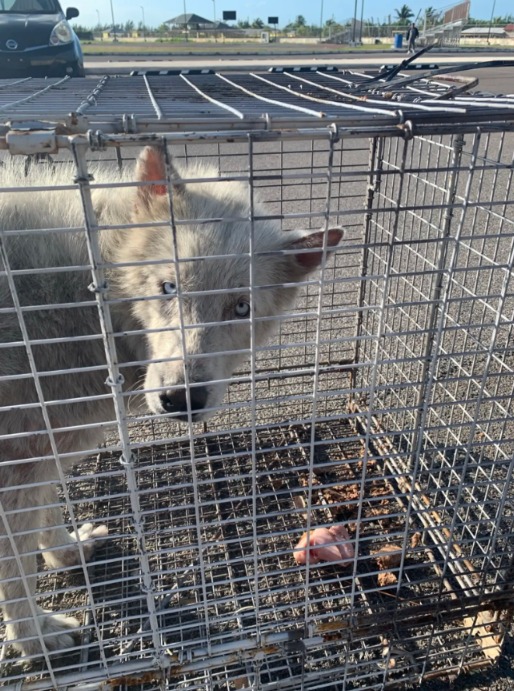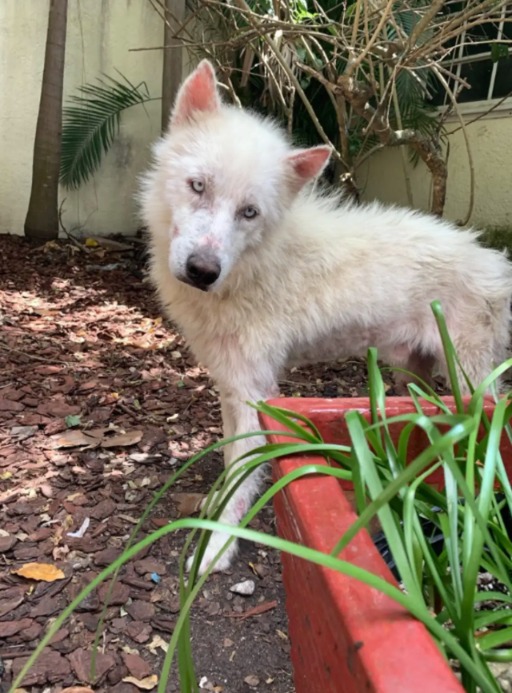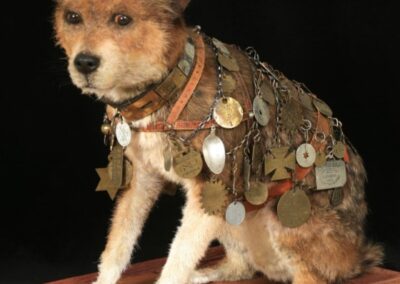
They called him Chupacabra because for too long, people thought he was something mythical. Something monstrous. Alien. But Chupacabra was just a dog—lost, broken, hiding in plain sight under a car.
For years, he lived there. Emaciated. Hairless in patches. Avoiding human contact. Scared. Locals saw him—some pitied him, others recoiled, unable to get close.
He was wild enough to vanish at the hint of shadow. Under that car, he was invisible and untouchable.
Then came someone who refused to leave him under that car forever.
A rescuer—not quick-tempered, not in a rush, just steady and willing to try. Because sometimes what a dog on the edge of myth needs most is patience.
It wasn’t easy. Every attempt at approach was met with fear. Snarls. Fleeing. Sometimes silence. That silence was the loudest kind of hurt.
But the rescuer kept showing up. Meals placed just beyond the undercarriage. Gentle voices, no sudden moves. The days stretched out.
Trust was earned inch by inch.
One evening, after months of small kindnesses, something in Chupacabra cracked. He edged forward. He let the hand come closer.
He didn’t run away. That’s the moment the rescue became real.

He was lifted out from under the car. Finally out into open air. Into safety. Into care.
Then came the work: medical treatment, nourishment, vet check-ups. A place to sleep that wasn’t cold or hard. A blanket. Warmth.
And then, something miraculous: fur began to grow back. His ribs, once visible, softened under flesh.
His eyes, once haunted shadows, began to track the world curiously. The tail, once tucked under, gave the gentlest wag.
He started to believe, perhaps for the first time, that hands could help instead of harm.
People saw the transformation. Photos were posted. Before and after. Comments flooded in: “This is what love looks like.”
“He’s not a monster—he’s hope.” “Thank you for not giving up.”
Chupacabra’s story spread because it carried a message: compassion isn’t just about the big rescues.
It’s about showing up for the invisible. It’s about staying even when hope feels too fragile to hold onto.
It’s about believing that under the scars and under the neglect, there is still a dog worth everything.

He regained his trust in humans. He let people pet him. He followed footsteps. He stayed near people without fear. He slept with fewer flinches.
He got to eat until he was full. To be clean. To be seen—not as legend or myth, but as a being with heart and fragility and strength.
Today, Chupacabra doesn’t live under a car anymore. He lives somewhere he’s safe. Somewhere warm. Somewhere love reaches him.
He’s healed—though not perfectly—and that’s okay. Because healing isn’t perfection. It’s the journey.
His story is a beacon. For every dog hidden in shadows.
For every creature abandoned because they frighten, because they’re ragged, because they’re hairless, because people have already given up.
It’s proof that rescue isn’t rare magic—it’s simple choice. To care. To knock on fear’s door and softly call “friend.”
And that’s how a dog who once lived as caricature under a car became just another dog who deserves everything: food, warmth, kindness, and a life unhidden.



